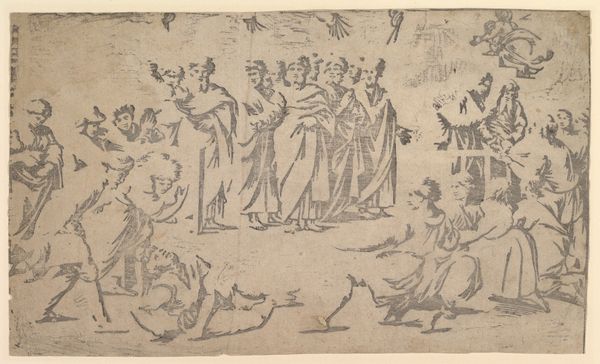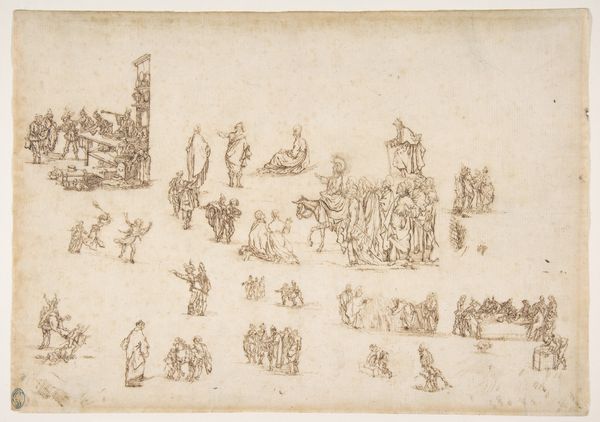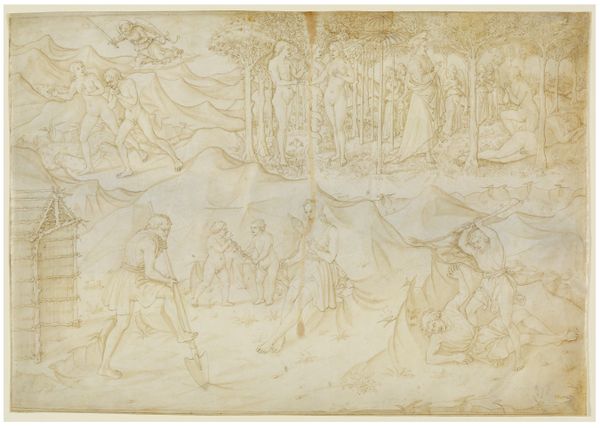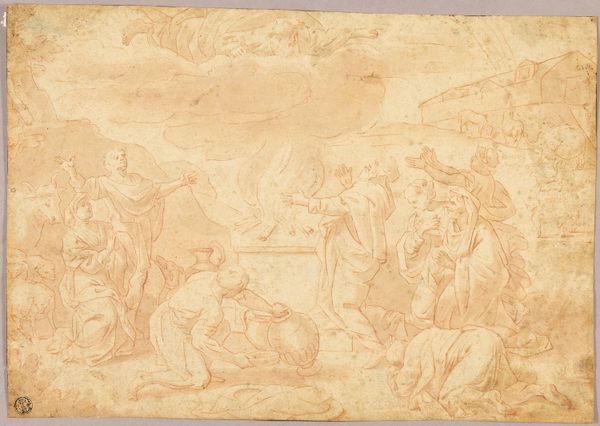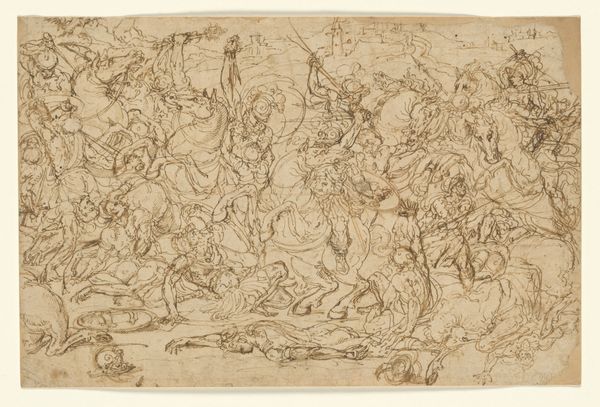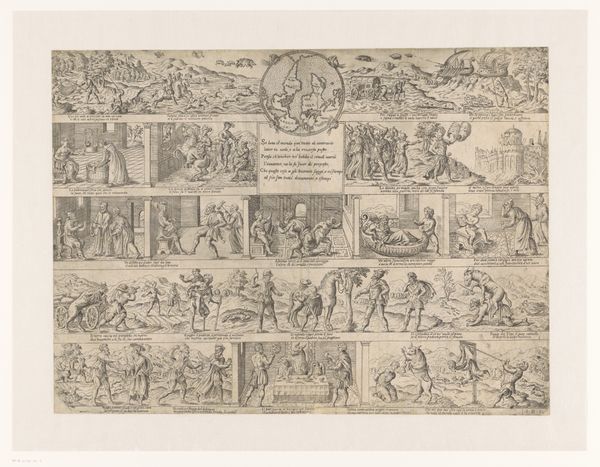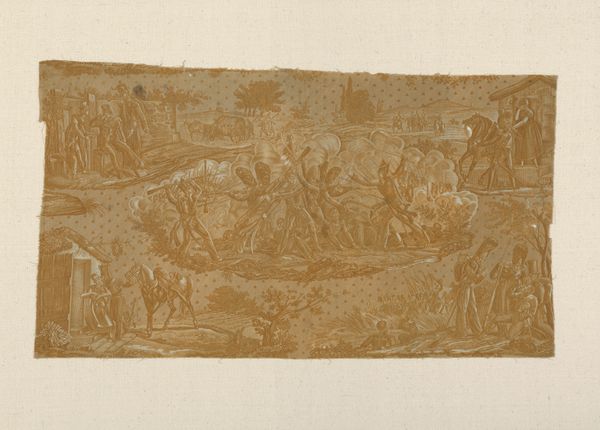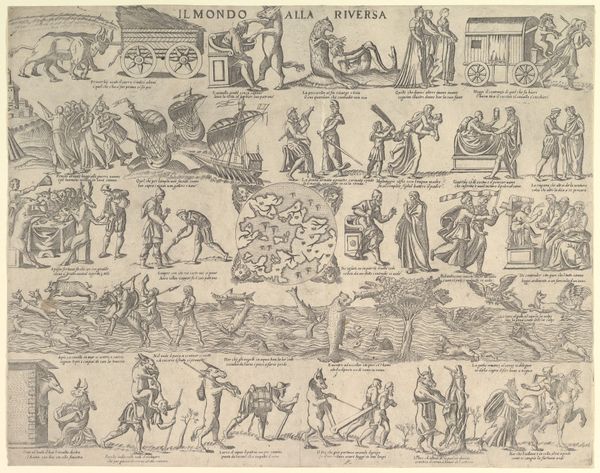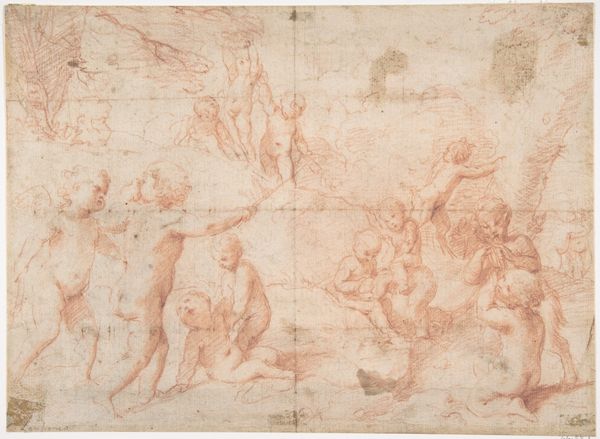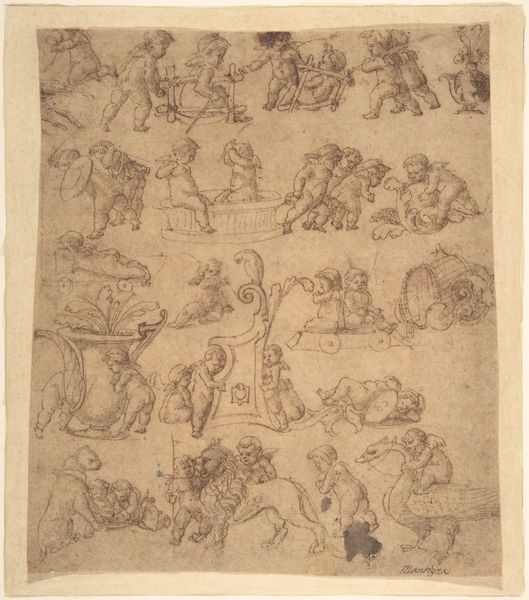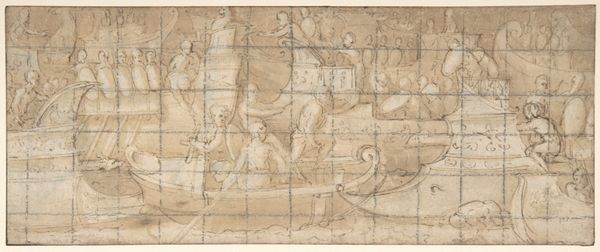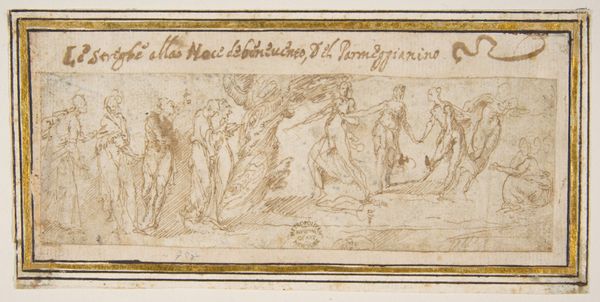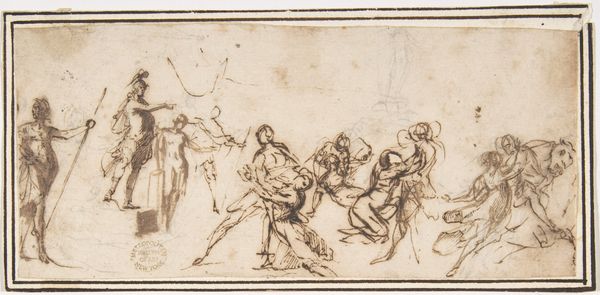
Two friezes, one above the other, with scenes from the early history of Rome 1551 - 1629
0:00
0:00
drawing
#
drawing
#
narrative-art
#
figuration
#
romanesque
#
line
#
history-painting
#
italian-renaissance
Dimensions: 229 mm (height) x 324 mm (width) (bladmaal)
Editor: This drawing by Avanzino Nucci, "Two friezes, one above the other, with scenes from the early history of Rome," dates from 1551 to 1629. The monochromatic red tone gives it a very classical feel, like I’m looking at an ancient fresco, though I notice that each scene is labeled, which seems almost academic. What can you tell me about the role history painting played in society at the time? Curator: Well, you’ve picked up on something key. History painting during the Renaissance wasn't just about illustrating the past; it was about constructing and reinforcing societal values, often used to legitimize political power. These visual narratives offered moral examples and civic ideals, intended to inspire and shape public behavior. Editor: So, the artist’s decisions in depicting these figures would have been incredibly important. Curator: Precisely. Consider the figures: their poses, expressions, even their clothing were meticulously chosen to convey specific virtues or warnings. Also, where would something like this be displayed, and for what audience? Editor: This particular work is a drawing, so it was most likely intended to be preparatory in nature, but where could the finished painted versions be displayed, and what sort of messages could that artwork transmit? Curator: That’s a great question to be asking. Grand frescoes narrating Rome's glorious past often adorned public buildings, reinforcing the city’s claim to leadership and inspiring civic pride. What do you think the choice of depicting “early” Roman history tells us? Editor: Perhaps that choice of subject serves as a foundation or origin story, lending greater legitimacy to subsequent periods, as if saying that "Rome was always great." Thanks! I hadn't thought about the connection between history, location, and power quite so explicitly. Curator: Absolutely! Thinking about how institutions shape narratives makes you look at art in a whole new light, right? There's always more than meets the eye.
Comments
No comments
Be the first to comment and join the conversation on the ultimate creative platform.
